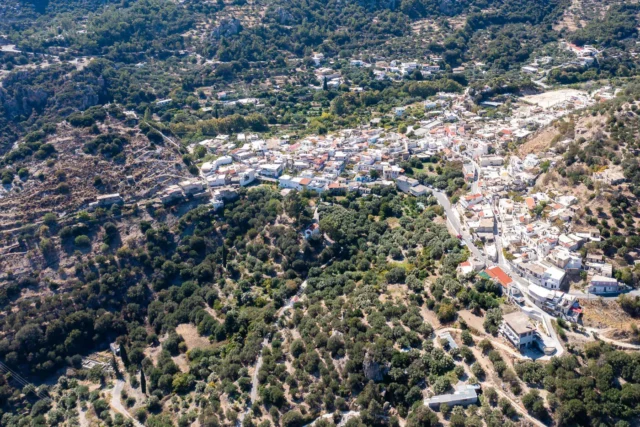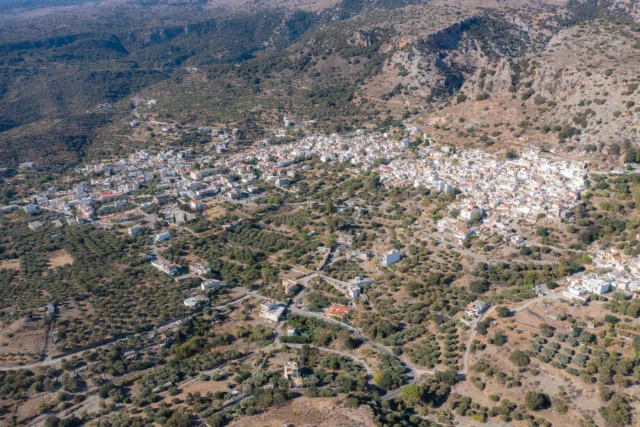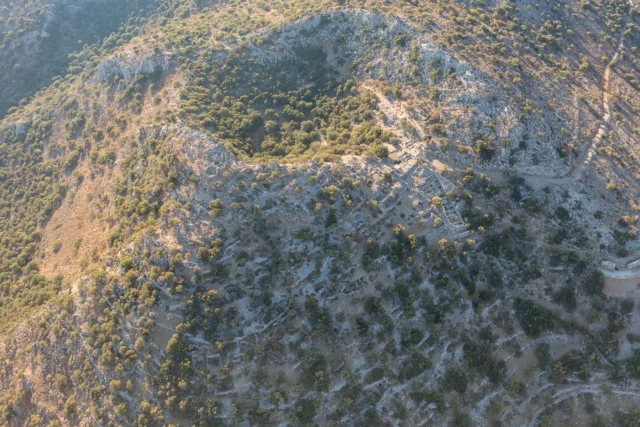Hierapytna, located on the southern coast of Crete, was a prominent city in ancient times. It was renowned for its strategic location, which made it an important center for trade and commerce. The city also played a significant role in the island’s political and military affairs. Today, the modern city of Ierapetra stands in its place, bearing witness to the rich history and cultural heritage of the area.
Hierapytna: An Ancient City
Founding and Early History
Hierapytna’s founding is shrouded in legend, with some accounts attributing it to the Corybantes, mythical beings associated with the goddess Rhea. Throughout its history, the city bore several names, including Cyrba, Pytna, Camirus, and finally Hierapytna. The name “Hierapytna” is believed to signify “sacred Pytna,” highlighting the city’s religious significance.
Strategic Location and Importance
Hierapytna’s strategic location on the southern coast of Crete made it a significant hub for trade and commerce. The city’s port served as a vital link between the eastern and western parts of the island, as well as a gateway to other Mediterranean regions. Hierapytna’s strategic importance also made it a coveted prize in various conflicts throughout its history.
Hellenistic Period
During the Hellenistic period, Hierapytna flourished as an independent city-state. It maintained diplomatic relations with other Cretan cities and formed alliances with powerful kingdoms like the Ptolemaic Empire. The city’s economy thrived, and its cultural life flourished during this era.
Roman Period
In 67 BC, Crete fell under Roman rule, and Hierapytna became a part of the Roman province of Creta et Cyrenaica. The city continued to prosper under Roman administration, and its infrastructure was further developed. Hierapytna’s loyalty to Rome was rewarded with various privileges and exemptions.
Byzantine Period
After the division of the Roman Empire, Hierapytna became part of the Eastern Roman or Byzantine Empire. The city remained an important center during this period, serving as a bishopric and a military stronghold. However, Hierapytna faced numerous challenges, including Arab raids and earthquakes, which gradually led to its decline.
Later History and Abandonment
Following the Arab conquest of Crete in the 9th century, Hierapytna fell into obscurity. The city was eventually abandoned, and its ruins were gradually covered by the sands of time. The Venetians, who ruled Crete from the 13th to the 17th centuries, built a fortress near the site of Hierapytna, but the ancient city itself remained largely forgotten until modern archaeological investigations began in the 20th century.
Archaeological Investigations
Early Investigations
The first archaeological investigations at Hierapytna were conducted in the late 19th century by Italian archaeologists. These early excavations uncovered various remains, including parts of the city walls, a theater, and a temple. However, these investigations were limited in scope and did not provide a comprehensive understanding of the city’s layout and history.
Modern Excavations
More systematic excavations at Hierapytna began in the mid-20th century and have continued to the present day. These excavations have revealed a wealth of information about the city’s urban development, public buildings, and private houses. The discovery of numerous artifacts, including pottery, coins, and inscriptions, has shed light on the city’s economic, social, and cultural life.
Key Findings
Among the key findings of the archaeological investigations at Hierapytna are:
-
City walls: The city walls, dating back to the Hellenistic period, were made of large, well-dressed blocks and were reinforced with towers. The walls enclosed an area of approximately 60 hectares, making Hierapytna one of the largest cities in Crete.
-
Agora: The agora, or marketplace, was the center of the city’s commercial and social life. It was a large, open space surrounded by public buildings, shops, and stoas.
-
Temple: A temple dedicated to an unknown deity was discovered in the agora. It was a Doric temple with six columns on the facade and twelve on the sides.
-
Theater: The theater, located on the eastern slope of the acropolis, was built in the Hellenistic period and could accommodate around 4,000 spectators. It was used for theatrical performances, musical contests, and public assemblies.
-
Houses: Numerous private houses have been excavated, providing insights into the daily life of the city’s inhabitants. The houses were typically built around a central courtyard and were decorated with mosaics and frescoes.
Hierapytna: Key Points
-
Construction Period: Founded in the Geometric period (c. 9th century BC)
-
Location: Southern coast of Crete, near modern Ierapetra
-
Dimensions: City walls enclosed an area of approximately 60 hectares
-
Historical Significance: Major city in ancient Crete, important center for trade and commerce, played a significant role in the island’s political and military affairs
-
Current Status: Archaeological site, partially excavated
References
-
Ager, S. L. (1994). Hellenistic Crete and ΚΟΙΝΟΔΙΚΙΟΝ. The Journal of Hellenic Studies, 114, 1-18.
-
Baldwin Bowsky, M. W. (2006). Highways and Byways of Roman Hierapytna (Crete): Four New Claudian Road Inscriptions. Annuario Della Scuola Archeologica Di Atene E Delle Missioni Italiane In Oriente, 84(1), 551-580.
-
Gallimore, S. (2015). An Island Economy: Hellenistic and Roman Pottery from Hierapytna, Crete. Peter Lang.
-
V. Αποστολάκου. (2012). Συνθήκη συμμαχίας Ιεραπυτνίων – Απταραίων. ΔΙΝΗΕΣΣΑ: ΤΙΜΗΤΙΚΟΣ ΤΟΜΟΣ ΓΙΑ ΤΗΝ ΚΑΤΕΡΙΝΑ ΡΩΜΙΟΠΟΥΛΟΥ, 629–636.

































There are no comments yet.